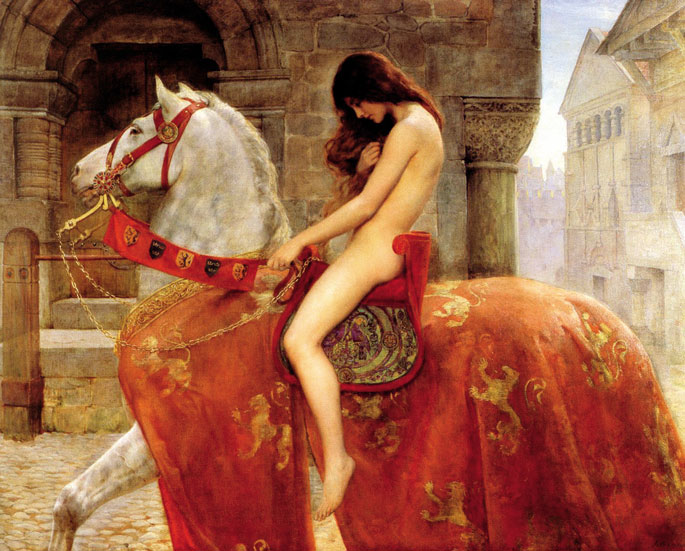

Coventry (England), 11th century The Lord of the city of Leofric (968–1057) had killed the people for the suffocating taxes. Her wife, Lady Godiva, insisted on calming the burdens and Leofric finally agreed to alleviate taxes if her wife, riding and naked, walked the streets of Coventry. After ordering all the inhabitants to stay at home and close the windows, Godiva fulfilled the condition of the Count, covering his naked body with his long hair. Thus, Leofric abolished heavy taxes. At least that's what the legend says.
Lady Godiva really existed, although little data about her has come to us. When he married Leofric, he was already a widow, according to Liber Eliensis. In 1043 the marriage founded the Benedictine monastery of Coventry. Roger of Wendover wrote in the 12th century that the countess convinced her husband to give him funds for the foundation of the monastery. Their names appear in documents as benefactors from other religious houses, such as Worcester, Lincolnshire... The people of Coventry, Lady Govdiva also gave a magnificent result. Series of pieces worked by the well-known Mannig urregin. The latest news of Govdiva's actions date back to 1066, and we know that in 1088 he had already died.
Although these data suggest that the countess was generous, the legend of nudity does not seem to be true. The legend was first written in the 13th century, 200 years after the event. Several historians see the story as a rite of pagan fertility: the future queen had to walk naked in the streets to celebrate the arrival of spring. Another explanation is the processions of the time. Those who repented would make their way in the inner suit. Govdiva would have done it with his suit under penance, but over time he would have stripped of all his clothes and added more attractive elements to him. Moreover, according to Anglo-Saxon laws – we are talking about the time before the Norman conquest – Lady Govira also had the power to establish taxes. So a horse's march doesn't make sense.
Not even one of the most well-known moments of voyeurism in history has any real basis. Legend has it that Tom, the tailor, made a hole in the shutter to see the gentleman, and that the moment he saw Lady Godiva was blind. Well, in the oldest sources in history, you see no trace of Tom Begiluze. In addition, Tom (Thomas) is not an Anglo-Saxon name, and in this small Coventry, made up of 69 families, there is unlikely to be a resident named Tom. Or protest naked against the tax that the most powerful woman in the country had imposed with her consent.